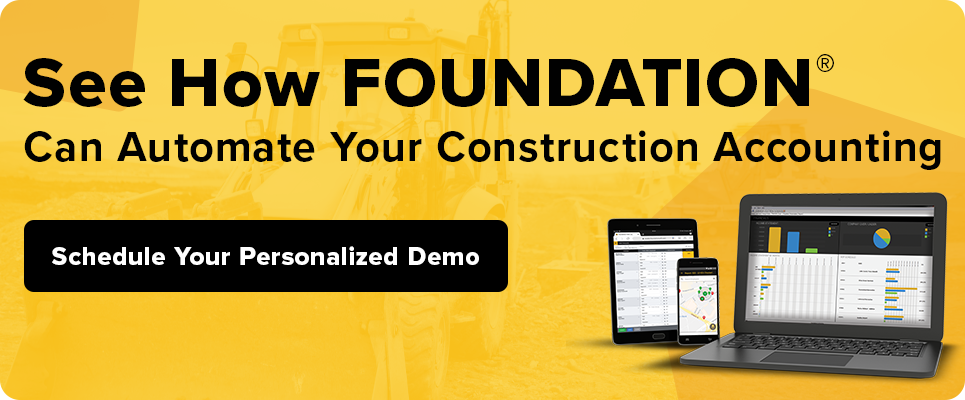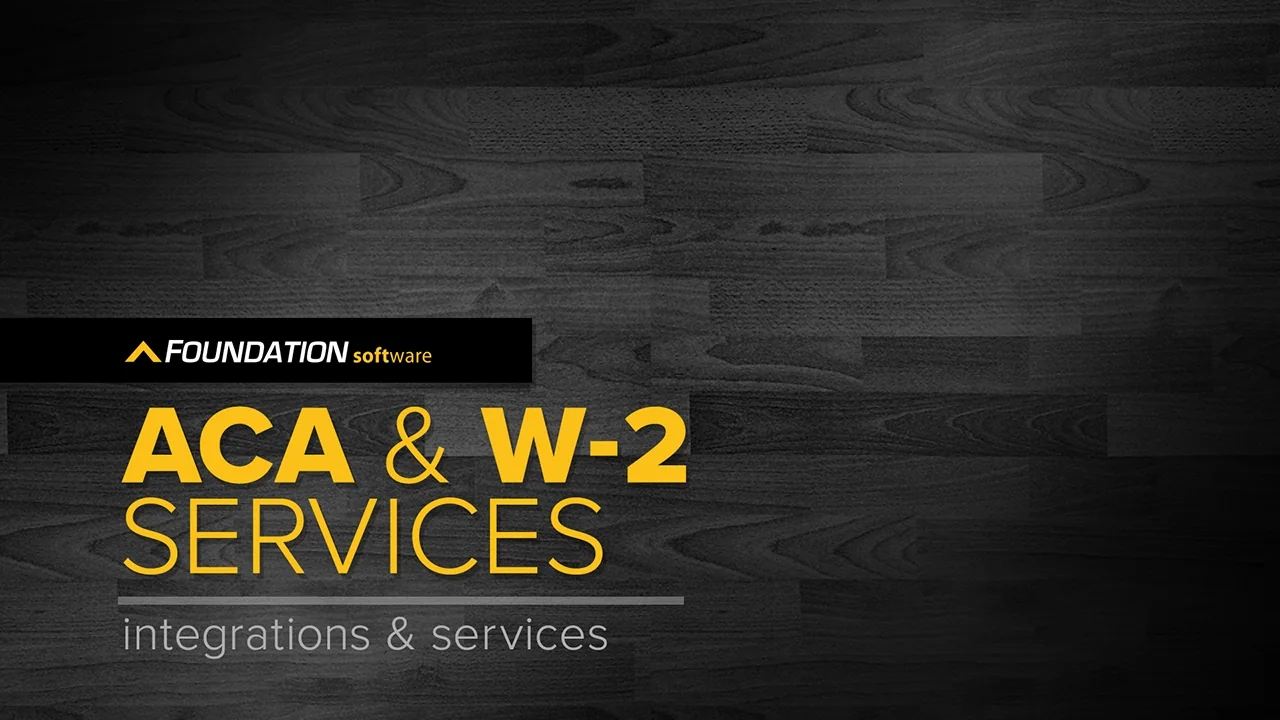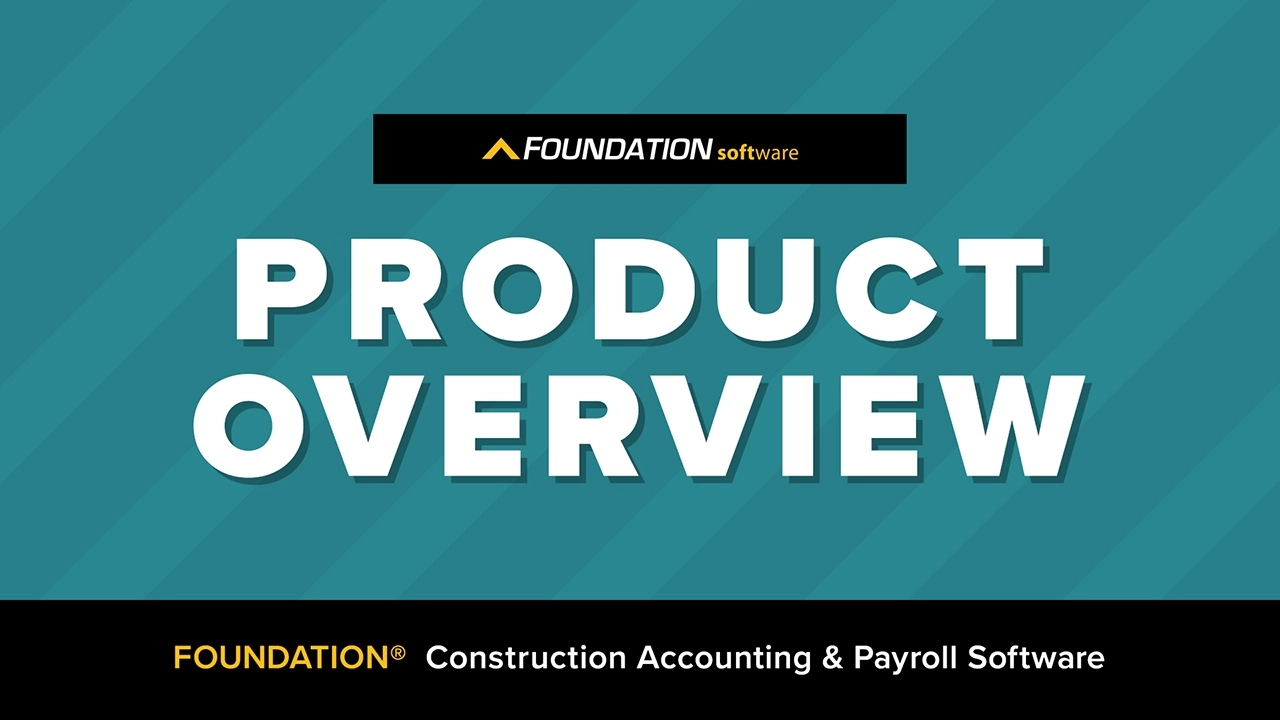
Some positions in baseball (think pitcher) get all the glory, while other players (think catcher) are vital to the game yet remain somewhat invisible. And so it is with construction accounting software features. Some are just not as glamorous as others. A detailed audit trail, for example, may not excite contractors like some cool bell-and-whistle features. On the other hand, the audit trail could quite possibly be the most important software feature of all.
What makes the audit trail so important? It all has to do with integrity of data (which just so happens to be the fundamental requirement of an accounting system). The purpose of an audit trail is to allow verification of the balance in a General Ledger account. By creating a log of all transactions, it enables users to trace each and every transaction posted to the account back to a previously validated balance (or vice versa).

To put it another way, it is the audit trail that finds the answers to such questions as: Why doesn’t the month-end G/L report match the month-end job cost report? Who modified/reversed a transaction? Where did the $85,000 in material expenses come from? When did the General Ledger go out of balance? Clearly, the audit trail’s capabilities are crucial to the auditing process.
Not All Audit Trails Are Created Equal
The existence of an audit trail does not guarantee data integrity. Nearly every construction accounting software system offers an audit trail feature, but not all make it easy – or even possible – to get detailed information for account balance verification.
Some accounting systems, unbelievable as it sounds, allow users to turn their audit trails on and off or delete transactions completely, which means the transaction is also erased from the audit trail. When a mistake shows up and the accounts don’t balance, there is no record to explain the error. It’s the kind of scenario that keeps contractors up at night and their CPAs hooked on antacids.
What should contractors look for in terms of an audit trail requirement? The best construction accounting systems allow users to look at a General Ledger financial report (any report) and trace each cost all the way back to its original source. They offer comprehensive drill-down capability, and they assign numerous codes to each transaction (e.g., the user who posted it, the source module, the job number, the vendor, and so on) for greater details and reporting options. The best systems provide an audit trail of every adjustment or reversal, and they offer data entry controls to prevent errors. And most importantly, when it comes to the audit trail feature, the best systems are date-sensitive, meaning that transactions are logged by transaction date rather than within a transaction period.
The Benefits of Date Sensitivity
As a component of the audit trail, date sensitivity allows users to quickly and easily find as much information as possible. This feature impacts just about every aspect of the construction accounting software package, and it provides endless benefits to both system users and end users (e.g., accounts payable clerk, controller and CPA). Here are just a few considerations:
Historical Reporting: Some systems that claim to be “date-sensitive” actually perform a monthly close, where all data is consolidated into one huge journal entry… and the audit trail to individual transactions is severed. Older hard-close systems are even more restrictive. When fiscal (or even monthly) periods end, historical detail is lost. True date sensitivity, on the other hand, allows users to run any report for any time period – even crossing fiscal years or from years in the past.
Unconventional Date Ranges and Flexible Fiscal Periods: Typically, most contractors run their financial reports on a monthly, quarterly or annual basis. But what happens if a contractor (or his or her CPA) wants to run a report for a particular date range (like a single day, a three-day period or multiple weeks)? With date sensitivity, it’s as easy as selecting the date range and clicking a button. This capability not only helps with internal reporting, it also makes the auditing process a lot easier and less time-consuming. And for contractors who use non-traditional fiscal periods (e.g., July 1 through June 30), it’s essential.
Data Control: Good systems with date sensitivity allow users to post transactions in prior or future periods, but they also include built-in security restrictions to help prevent accidental postings outside the defined date range. What’s more, a date-sensitive audit trail is created for every change, and the in/out posting shows up in the General Ledger, Job Costing and the source module.
Detailed Date Stamping: Aside from stamping each transaction with codes that identify who entered it, in which module it originated, and so on, the key to date sensitivity is, well, the date. In the world of accounting, there are actually two dates: the transaction date (the day that a transaction hit the General Ledger) and the posting date (the day that a user performed the task). Having a detailed history of both dates is important, especially when it comes to isolating dates (e.g., after last month’s balanced aging report and before today’s non-balanced one.)
Reporting Flexibility: Date sensitivity offers complete flexibility when it comes to sorting, grouping and filtering data. The ability to run a General Ledger financial report by job (a favorite among construction CPAs) is one such example. Using sorting and filtering options, users could focus on a specific date range, all A/P invoices, material costs, and so on.
Why Use Purchase Orders/Subcontracts?
Purchase orders/subcontracts track the costs of a project. By definition, they are the contracts that determine the sale conditions. They spell out price, delivery specifications, payment guidelines and other terms. From an accounting perspective, there are two benefits of using purchase orders/ subcontracts for construction materials and supplies:
- A purchase order/subcontract allows contractors to track the monetary, or billing, aspect of the transaction so that they can see not only committed costs, but also the remaining committed costs (expenses that are forthcoming but have not yet been billed) throughout the life of a project.
- A purchase order/subcontract creates a system for tracking the physical, or quantity, aspect of the purchase agreement so that contractors can better manage the materials/work needed for jobs or supplies held in inventory.

Audit trail and date sensitivity – though not the most glamorous of construction accounting software features – are well deserving of attention and respect. Like the major league catcher who watches all and assumes the role of “field general,” these items play a huge role in the effectiveness of a contractor’s construction accounting software system.
*Published in Construction Business Owner
Share Article
Keep on current news in the construction industry. Subscribe to free eNews!
Learn about our software more in depth with product overviews, demos, and much more!

Our ACA reporting & e-filing services include official 1094-C and 1095-C IRS reporting, optional e-filing (no applying for a TCC code required), mailing to your employees and experienced support to help you.

There are plenty of reasons to make FOUNDATION your choice for job cost accounting and construction management software — just ask our clients!

From job cost accounting software, to construction-specific payroll. Get an overview on your next all-in-one back-office solution.



